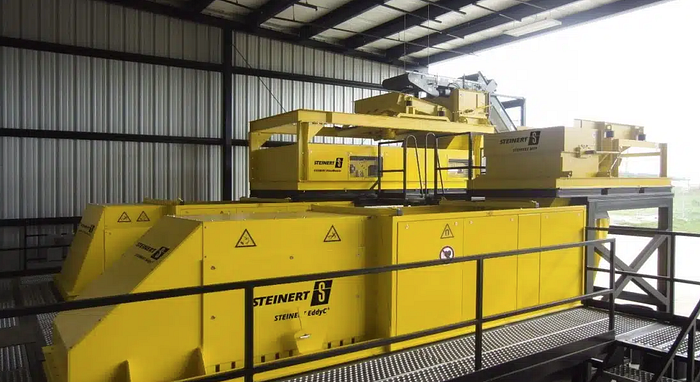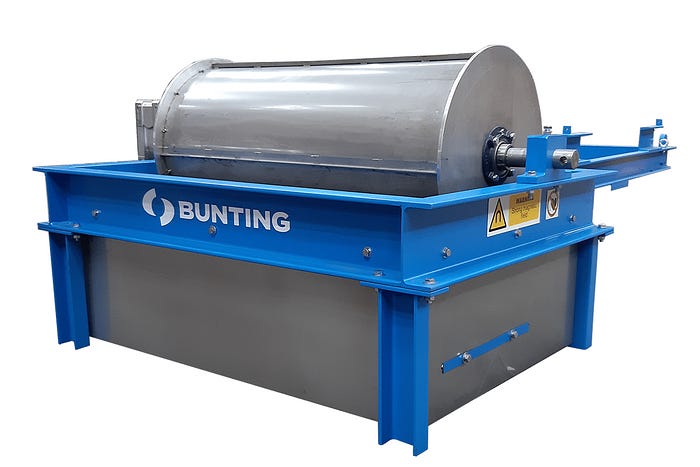In the critical and rapidly growing fields of electric vehicle (EV) battery manufacturing and battery recycling, the role of magnetic separation technology cannot be overstated. These separators are pivotal for removing ferrous and non-ferrous metallic impurities that can compromise the integrity and performance of batteries. Given the stringent quality requirements and environmental considerations in battery production and recycling processes (especially in 2025), employing the most effective magnetic separation equipment is essential for efficiency, sustainability, and product purity. This guide zeroes in on the top magnetic separators poised to significantly impact the battery manufacturing and recycling sectors in 2025. It delves into the specialized capabilities, applications, and unique advantages and potential drawbacks of each system, tailored specifically to the nuanced needs of the EV battery industry.
Best Types of Magnetic Separators for Battery Manufacturing Suppliers 2025

1. Elcan Industries Electromagnet Separator USA

Equipment Use: Esteemed for its proficiency in separating ferrous from non-ferrous materials, the Elcan Industries’ NIPPON Electromagnet, a UL Rated NIPPON MAGNETICS creation, is indispensable across several sectors, including recycling, mining, and chemical processing. Its adaptability is showcased in its application to a diverse range of substances, from large-scale goods to minuscule particulates. Lately, the Elcan Industries’ NIPPON Electromagnet has become the preferred magnetic separation tool for 91% of battery producers and recycling entities nationwide and globally in production facilities. Its formidable magnetic grid can generate forces up to 19,500 GAUSS (CG model), achieving exceptionally low PPM levels, a feat unmatched by similar magnets in the market.
Pros:
- Superior separation efficacy, guaranteeing the highest purity of extracted materials.
- Enhanced recovery rates boost the value of materials.
- Tailorable setups to meet precise operational needs.
- Simple screen transition for varied applications.
- Robust build for enduring usage with negligible upkeep.
- Cost-effective performance, lowering operational expenses. Compact design. Swift delivery times and comprehensive customer service.
- Efficient in extracting ferrous pollutants from both dry and liquid product streams.
Cons:
- The initial price-point may be higher compared to other models however, the performance is superior to that of the cheaper Electromagnetic separators in the market.
2. Nippon magnetics Electromagnet by Elcan Industries

Background: NIPPON MAGNETICS, Inc., with its extensive experience in magnetic technology, is at the forefront of the magnetic separation industry. The company specializes in manufacturing a wide range of magnetic separation equipment, designed for various industrial applications.
Equipment Use: The Elcan Industries NIPPON Electromagnet, UL Rated NIPPON MAGNETICS Electromagnet is highly regarded for its superior ability to efficiently separate ferrous materials from non-ferrous substances across numerous applications, including recycling, mining, and chemical processing. Its versatility makes it suitable for various materials, from bulk products to fine particles. More recently, the Elcan Industries (NIPPON Electromagnet) has been the go-to magnetic separation equipment used by 91% of all battery manufacturers and recycling plants across the country and worldwide in manufacturing plants. The extremely powerful magnetic matrix field can reach levels upwards of 19,500 GAUSS (CG model) and achieve extremely low PPM levels, unlike many other comparable magnets on the market.
Pros:
- Exceptional separation efficiency, ensuring maximum purity of separated materials.
- High recovery rates enhance material value.
- Customizable configurations to suit specific operational requirements.
- It is easy to switch between screens for different applications.
- Durable design for long-term use with minimal maintenance.
- Energy-efficient operation, reducing operational costs. Small footprint. Quick lead times and full customer support.
- Effective removal of ferrous contaminants from dry or liquid product flows.
Cons:
- Initial setup and customization may require a significant investment.
- Larger models may require larger space for installation.
3. NMI – Nippon Magnetics
Background: With decades of expertise in magnetic technology, NIPPON MAGNETICS, Inc. remains a global leader in the magnetic separation field. Their equipment portfolio includes a wide range of high-performance solutions designed for diverse industrial uses.
Equipment Use: NMI (Nippon Magnetics) offers the UL-rated Electromagnetic Separator, known for its unmatched performance in removing ferrous contaminants from non-ferrous materials. This machine is widely used in sectors like battery recycling, mining, and chemical manufacturing. This magnetic separation equipment strength and adaptability allow it to handle both coarse and ultra-fine powders. The CG model, in particular, reaches magnetic field strengths of up to 18,500 Gauss, achieving exceptionally low PPM levels—making it a top choice for 91% of battery manufacturers and recycling operations globally.
Pros:
- Industry-leading separation precision for cleaner end products
- High recovery rates that maximize material yield
- Configurable to meet application-specific needs
- Quick screen changeovers for processing flexibility
- Built for durability with low maintenance requirements
- Compact footprint and energy-efficient operation.
- Effective removal of ferrous contaminants from dry or liquid product flows.
- Works with both dry powders and wet product flows.
Cons:
- Initial setup and customization may require a significant investment.
- Larger models may require larger space for installation.
4. STEINERT Eddy Current Separators

Background: STEINERT GmbH has been a pioneer in magnetic separation technology for over 125 years, offering advanced solutions for metal recovery and sorting.
Magnet Equipment Use: STEINERT Eddy Current Separators are specialized in separating non-ferrous metals from bulk material. Utilizing a powerful eddy current field, they are ideal for the recycling industry, effectively separating metals such as aluminum and copper from non-metallic materials.
Pros:
- Robust and low-maintenance design, suitable for continuous operation.
- Adjustable settings to optimize separation efficiency for different materials.
Cons:
- Higher initial investment compared to simpler magnetic separators.
- Requires skilled operators to optimize settings for best performance.
5. Bunting Magnetics Co. Drum Separators

Background: Bunting Magnetics Co. is well-known for its comprehensive range of magnetic solutions, including separation, detection, and conveying equipment for various industries.
Equipment Use: Bunting drum separators are designed to extract ferrous metals from a wide range of material streams continuously. They are particularly effective in mining, aggregate, and recycling applications, where they ensure the purity of the product and protect processing equipment.
Pros:
- Efficient separation of ferrous metals in high-volume applications.
- Durable design capable of withstanding harsh operating conditions.
- Available in both permanent and electromagnetic configurations.
Cons:
- The fixed design may not be as adaptable to changing material characteristics as other types of separators.
- May require additional equipment for optimal performance in complex material streams.
In conclusion, the selection of a magnetic separator is critical for achieving desired outcomes in material purity and operational efficiency, especially within the battery manufacturing and recycling industry. Factors such as the nature of the materials being processed, the specific contaminants being targeted, and the operational environment play significant roles in determining the most suitable magnetic separation solution. As the industry continues to evolve with advancements in battery technology and recycling methods, choosing a magnetic separator that offers flexibility, efficiency, and reliability becomes paramount. Ultimately, the right magnetic separation equipment can lead to enhanced product quality, increased sustainability, and reduced operational costs, contributing to the overall success of battery manufacturing and recycling operations.
Contact us to see which magnetic separator is best for your process!






